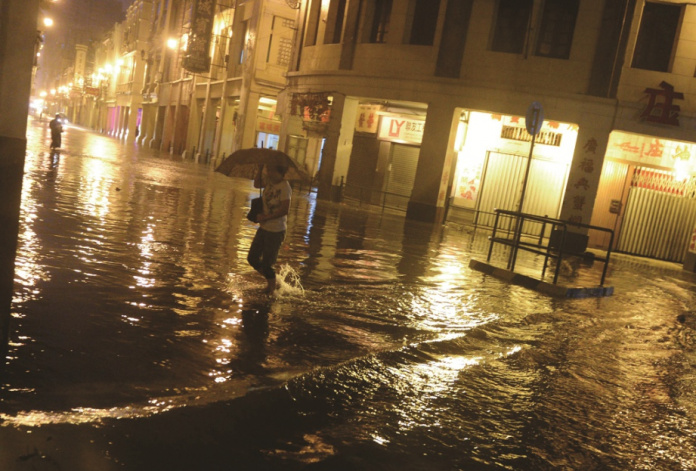Macau Business | August 2022 | Special Report | Hato’s “ghost” – 5 years on
Why the ghost lives
Last April, the Transport Bureau suspended its Ferreira Amaral Square bus station improvement project – which planned to reroute some buses below street level using the underground motorcycle parking facility – after the severe flooding recorded in June of last year.
A few months earlier, it was announced that preliminary design work for the East Line of the LRT will factor in the probability of future flooding on a time scale of 200 years.
The truth is that Macau has never been the same since 23 August 2017.
Events surrounding the landfall of super typhoon Hato, which became known as the “Hato incident”, had multiple repercussions on a wide variety of fronts: 12 fatalities and over 200 injuries were recorded, along with massive infrastructure damage, supply shortages and flash flooding, making Hato the deadliest typhoon to strike Macau in 53 years.
Five years on, we’re discussing some of the underlying problems, and what has been and remains to be done about them, in this special report.
Key voices addressing these issues include Secretary Rosário.”It is almost impossible” to prevent flooding in the city, because “Macau is a very low-lying region, our soil cannot absorb water and we still have a problem with water overflow,” he said in a statement from 2020.
Earlier, Secretary for Security Wong Sio Chak had assured us: “Right now, we are able to face a typhoon with the same intensity as Hato.”
Co-ordinated by João Paulo Meneses

Reliving August 23rd
Five years not enough
No seawalls, no tidal gate. Not much has changed in the Inner Harbour since 2017
Lessons from science: peak wind intensity, maximum sea level and extreme high temperature
Lessons learned
“The future frequency and magnitude of storms that influence the GBA region will be increasing”
PTSD in the aftermath
Mangkhut, the following year
The affected area by Super Typhoon Mangkhut was several times that of Hato
More mangroves to protect the coast
A Macau-based study proves that wave reduction is influenced by mangrove density
“Tourism destinations face risks if they are struck by extreme weather events”
IMF links Macau’s future to climate change for the first time
IMF links Macau’s future to climate change for the first time
























